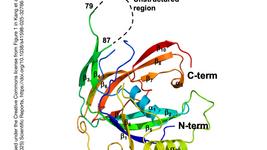Successful Gene Editing in the Lungs of Young Rhesus Monkeys Using AAV5 as a Delivery Vehicle
In an article published this week in Human Gene Therapy, researchers in the US report successful genome editing in the lungs of young rhesus monkeys using adeno-associated virus serotype 5 (AAV5) as a delivery vehicle.
Building on their previous studies, which resulted in a dual AAV CRISPR platform that allows genome editing in the airways of mice, the team now shows that intratracheal delivery of CRISPR-Cas9 in AAV5 can edit a housekeeping gene or a disease-related gene in the lungs of young rhesus monkeys.
They observed 8% editing of the ACE2 gene in lung lobes after a single dose of the gene-editing reagents, and single-nuclear RNA-seq revealed that AAV5 transduces multiple cell types in the caudal lung lobes, including alveolar cells, macrophages, fibroblasts, endothelial cells, and B cells.
The findings indicate that AAV5 is an effective delivery vehicle for CRISPR-Cas9 reagents in the lung lobes of young rhesus monkeys.
Read the full manuscript here.
Tags
CLINICAL TRIALS
Sponsors:
Base Therapeutics (Shanghai) Co., Ltd.
Sponsors:
Base Therapeutics (Shanghai) Co., Ltd.







